Ever pitied some poor bugger huddled for warmth on the side of a cold, wet motorway waiting for the breakdown truck? Every motorist’s worst nightmare must be an accident, but then breaking down in the middle lane of a motorway in rush hour and driving rain must be pretty close to top of the list. That is what happened to me and my son this last Friday evening, and for a time I can assure you it was pretty darn terrifying!
To cut a long story short we finally got back home 5 1/2 hours later in a hire car, famished and exhausted. The next day, the car finally arrived at the BMW dealership to be investigated and no doubt a plan of action will follow, preferably one that keeps me mobile and does not require me to pay yet another fortune for repairs. Oh, and I need to be mobile to drive to start a new client assignment by Weds am.
Admittedly it has been a long time, but I have been in this situation before. Last time was, if anything, worse. It came when I was driving my secondhand MG Metro through driving snow to move from North London to Manchester in 1988. I broke down in the services, on the motorway (luckily on the hard shoulder) and much closer to Manchester: three AA calls on one journey, and by the time I got there (9+ hours) I was totally wrecked and the car due for replacement, which duly occurred soon thereafter.
All pretty stressful and exhausting, and in both of the two instances quoted above, bloody freezing too. But they would be a million times worse – and hideously expensive – but for roadside assistance like the AA package I get thrown in with my bank account. In this case it paid for itself by virtue of a call-out to drag us off the motorway, a van to investigate the fault, free hire car for 3 days, and a further flatbed to take the car to the dealer in Chelmsford, who has been left in no doubt of my displeasure. but that’s a different story. Breaking down would be bad enough, but having to pay through the nose for a recovery service, then a huge repair bill, would be rubbing salt into the wound.
The worst of the situation is that you are completely powerless. You can’t abandon your car, passengers and luggage, even if you were close enough to walk somewhere for a nice coffee. Thankfully we now have mobile phones with which to call the police and/or emergency services. Time was, not so very long ago, when you had to walk down the road to find a call box, which were situated at every mile. If you broke down on a distant country road, you have no choice but to set foot and head for the nearest village, which may well have been closed down for the night. Maybe you would have to sleep in your car and hope a passing motorist took pity and stopped to help.
On the plus side, cars are infinitely more reliable than they once were, though the onus is on the driver to ensure they are well maintained and that all preventable breakdowns are prevented by topping up oil and fuel, tyres and suchlike. The following is a list of the top ten most common causes of breakdown, courtesy of Which? and the AA:
Cars don’t break down as often as they used to, but when they do it can be a major inconvenience. However, many breakdowns are caused by quite simple faults that can be avoided.
More than a third of calls to the AA are because of flat or faulty batteries, lost keys, a damaged wheel or flat tyre. Indeed, batteries, starting problems and tyres have been the top three reasons for calling out the AA since its formation in 1905.
Top ten car breakdown faults
1. Flat/faulty battery – 20%
Regular short trips are a big drain on the battery. Avoid this by giving the car an extended run every couple of weeks.
2. Lost keys – 10%
For security, a main dealer is often the only source of keys. On holiday, make sure two people have keys and keep them in separate places.
Move your car as far off the road as possible and get to a position of safety3. Flat tyre/damaged wheel – 5%
Make regular pressure and condition checks to reduce the risk of unexpected failure. Read our guide to changing a wheel.
4. Distributor cap – 3% or less
Damp conditions will affect this part if it is cracked or damaged. This could cause a high voltage short-circuit, preventing the spark from reaching the spark plug.
5. Alternator faults – 3% or less
Can be a faulty alternator, a bad connection or a worn drive belt.
6. Fuel problems – 3% or less
Always check which petrol pump you’re using – filling up with the wrong fuel is common The AA has ‘Fuel Assist’ vehicles, equipped to drain the tank, clean the system and re-fuel your car. If you do accidentally put the wrong fuel in and you notice in time, don’t start the engine. This can cause major engine damage, changing the remedy from a simple fuel-system flush to an expensive engine repair.
Most cars can be repaired at the roadside, but sometimes a tow truck will be necessary
7. Clutch cables – 3% or less
A clutch cable operates every time you change gear. But eventually it will fail, often without warning.
8. Spark plugs – 3% or less
Malfunction here can cause a misfire or failure to start. Have spark plugs changed in line with the manufacturer’s instructions.
9. HT leads – 3% or less
These deliver high voltage current to the spark plugs. They deteriorate due to temperature cycling and can fail without warning.
10. Starter motor – 3% or less
This can leave you stranded at home. Many breakdown policies only apply if your car is more than a quarter of a mile away from your house, so opt for home cover to minimise delays
Further detail from PetrolPrices.com:
Common breakdown call-outs
With more than 6.5 million vehicles left broken down in 2008, we have listed the top 5 reasons for their breakdowns, so that you can take precautionary measures to ensure the same doesn’t happen to your car.
Battery
The biggest cause of vehicle breakdowns in the UK is battery related problems. There are a few different reasons why car batteries fail or weaken, these are:
- Leaving the headlights, interior lights, radio and air conditioning on whilst the car is not running.
- Driving for short journeys, not allowing the battery to charge.
- Not maintaining your battery and making sure that the terminals are kept clean.
- Alternator not charging the battery, you will need to check your alternator.
- The battery is just old and it needs to be replaced
Tyres
Flat tyres and other tyre problems such as blowouts were the second most common callout in 2008. There are steps that you can take to make sure that your tyres are up to standard which should help prevent a breakdown.
- Make sure you check your tyre pressure every fortnight, and refer to your vehicle manual to find the correct pressures for different speeds and loads, and adjust them accordingly.
- This may sound obvious, but avoid hitting kerbs, as this can result in slow tyre leaks.
- Any uneven tyre wear may mean that your tyres need re-aligning, and you should get a mechanic to check them immediately.
- Keep a spare tyre and jack in the car. Make sure that the spare is ready to use and pumped up to the correct level, otherwise it will be of no use to you in an emergency.
- For information on how to change a tyre on your car, take a look at our useful leaflet and print it out to keep in your car.
Keys
Losing your keys can be a one of the most frustrating reasons to call out a recovery truck. Many modern cars have a transponder key to prevent theft, these are very expensive to replace so its worth getting a spare made, as a dealer may take a few days to obtain a replacement.
Alternator
There are a few indicators of a failing alternator, these are:
- Persistent battery problems.
- Dim headlights when the engine is idle.
- The belts that drive the cars alternator could also operate the radiator fan and water pump. If there is a rapid rise in the engine temperature, and a red ignition warning light this could mean that the belt is broken, you should immediately stop and call for recovery.
Starter Motor
If the starter motor fails to crank the engine, or turns to slowly then the engine will not start. Usually the starter motor in a car is very robust, but they can fail from time to time. Garage maintenance should point out any potential faults with a starter motor.
More advice too from Petrolprices.com on what to do in the event of a breakdown. None of this would have prevented my breakdown, but had I had a crystal ball I would have driven on to the hard shoulder before suffering a loss of power to the vehicle!
What should you do in the event of a breakdown?
Hopefully you will never have to put this advice into action, but in case you should breakdown here is some advice on what you should do to remain safe by the side of the road.
Broken down on a motorway?
- Ideally you should leave the motorway at the next junction, or exit onto a motorway service area. However, this is not always possible, so in the event that you have to stop immediately, indicate and pull over safely onto the hard shoulder. Make sure you park your vehicle as far left as possible, with the wheels turned to the left. Try to stop as close to an emergency roadside telephone, which are approximately a mile apart on the motorway.
- Before you get out of the vehicle, engage the handbrake and turn your hazard warning and sidelights on. In very poor visibility you should also put on your rear fog lights.
- Make sure that you and your passengers leave the car from the near side doors, and stand as far back from the road as possible. (Up on the bank or behind a safety barrier if possible.) Leave any animals in the vehicle.
- DO NOT attempt to make any repairs, no matter how simple you deem them to be. This can be highly dangerous and could result in an accident.
- Instead walk to the nearest emergency roadside telephone. A blue and white marker post is placed every 100m along the hard shoulder with an arrow indicating which way the nearest telephone is situated. Remember to walk as far away from the traffic as possible.
- If at anytime you should feel threatened by another person, return to your vehicle from the near side doors and lock all doors. Once you feel the danger has passed leave your vehicle again.
- If you are calling for recovery from a mobile telephone, then you should try and locate your exact location on the road.
- Wait for the recovery service to arrive. This is normally between a 40 and 60 minute wait.
I am in a ‘Free Recovery Area’
If you do breakdown in a free recovery zone then you will need to use the sos telephone box to call for free assistance. Marker posts along the motorway will let you know the direction of the nearest sos telephone box. You should be aware that a free recovery vehicle will only take you out of the free recovery zone and then you will have to phone for your own breakdown recovery
How do I know where I am?
If you breakdown on a motorway, then you need to give a detailed description of your location. As many of the motorways look very similar this can sometimes be tricky to do, especially if you are lost and have no idea of your location.
Luckily there are sign posts all along the motorway, (roughly 1 mile apart) which give information on which road you are travelling on, which direction you are travelling in, and how far you are from the start of the motorway. Here is an example of the sign you may see and information on how to understand it.
Broken down on other roads?
If you breakdown on any other roads, which are not motorways then it may be a bit safer to check your car yourself and judge whether you need a recovery truck. Follow these simple steps to ensure you and your passenger stay safe at the side of the road.
- Pull over and put your hazard lights on. If your vehicle is causing an obstruction, try and remove it from the road as quickly as possible.
- Carry a reflective jacket in the car, and put it on.
- If your vehicle is in danger of being struck by another then get out of the car with all passengers.
- If it is safe for you to repair the damage then you will need to place a warning triangle on the road at least 50 yards behind your broken down car. (N.B. Remember to retrieve it once you have fixed the car)
- DO NOT stand between your vehicle and oncoming traffic.
- If you are unable to fix your car then call for breakdown assistance, and give them a detailed description of where you are.
I wish you well, fellow motorists, but chances are in the course of a lifetime of driving you will break down at least once. As the cub scout motto puts it, BE PREPARED!

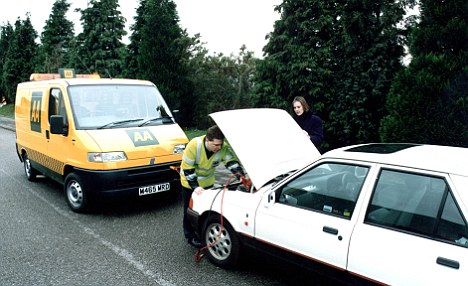


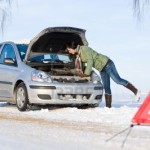
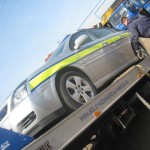
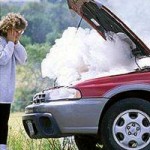

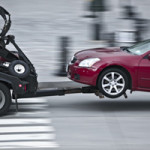
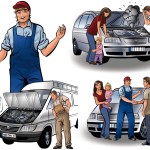




When I originally commented I clicked the -Notify me when new feedback are added- checkbox and now every time a remark is added I get four emails with the identical comment. Is there any means you can take away me from that service? Thanks!